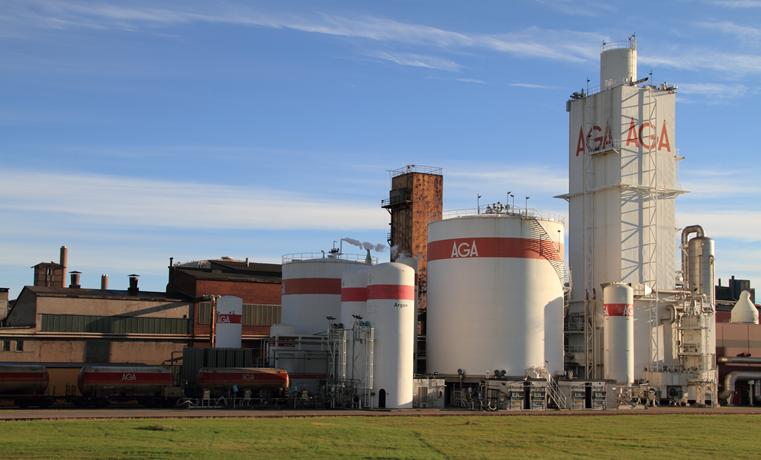- 1901 Svenska Carbid & Acetylen starts association with Gustaf Dalén
- 1902 Gustaf Dalén demonstrates acetylene welding for the first time in Sweden
- 1904 AB Gasaccumulator (AGA) is formed to exploit acetylene gas technology
- 1905 Gustaf Dalén invents the flashing apparatus, the AGA compound, the sun valve
- 1907 the Dalén mixer – the base for AGA’s future product development
- 1908 The first railway signal using AGA’s flashing light goes into operation
- 1909 Economic crisis, restructuring with new owners, Gustaf Dalén becomes president
- 1910 AGA lighthouses are established in Latin America
- 1911 AB Svenska Gasaccumulator, AGA, is listed on the Stockholm Stock Exchange
- 1912 Historical lighthouse order for the Panama Canal, Gustaf Dalén receives the Nobel Prize in Physics
- 1914 AGA starts its own oxygen production
- 1916 AGA buys AB Lux, the first AGA welding school starts training gas welders
- 1919 Focus on radio technology together with ASEA and LM Ericsson
- 1925 Electrical flashing light apparatus is launched
- 1929 Introduction of the AGA cooker and sound film equipment for movie theaters
- 1934 The Spiropulsator, the first significant medical AGA technology product, is launched
- 1935 Acquisition of AB Plåtförädling strengthens manufacture of light steel radiators
- 1936 Increased medical demand justifies own nitrous oxide production
- 1940 First mobile radio equipment is delivered to the Gothenburg police
- 1947 Acquisition of AB Tudor, makes batteries a new important product field
- 1951 The first factory for production of liquid gas is built on Lidingö, Stockholm
- 1953 Launch of the unique distance measuring instrument, the AGA Geodimeter
- 1954 AGA starts manufacturing black-and-white television sets
- 1965 The recently developed infrared camera system, AGA Thermovision, reaches the market
- 1969 The easy-to-install Thermopanel radiator is launched
- 1970 Sven Ågrup becomes president, new strategy with strong focus on air gases
- 1971 Cooperation agreement with L’Air Liquide in the Benelux countries and West Germany
- 1973 Incorporation of electronics division
- 1975 Breakthrough for AGA’s oxygen bleaching of woodpulp, Coronaverken incorporated into AGA’s radiator division
- 1977 Significant penetration of U.S. market through acquisition of the gas company Burdox. ·Launch of patented welding gas Mison
- 1978 Acquisition of AB Frigoscandia, a leading company in the freezing, cold storage and transport of food
- 1979 Oxy-fuel technology established in cooperation with Smedjebackens Valsverk
- 1980 CTC Group formed to coordinate heating operations
- 1981 Marcus Storch becomes president. AGA’s first gas freezer reaches the market
- 1982 Sale of the Pharos Group with a number of well-known AGA products including lighthouses
- 1983 Strong presence established in the Norwegian gas market
- 1984 Sale of CTC Group to Saab-Scania. AGA leaves manufacturing industry.
- 1985 Uddeholm and Tresor incorporated into the AGA Group. Specialty steel and electric power become new product areas.
- 1986 Increased strength in carbon dioxide market through acquisition of the German Rommenhöller Group
- 1987 Purchase of gas company Duffour et Igon strengthens position in France.
- 1988 AGA sells Uddeholm Tooling and ASSAB
- 1991 Return to Eastern Europe with gas companies in the Baltic and other countries
- 1994 Frigoscandia becomes a listed company and leaves the AGA Group
- 1996 Sales of the shares in Gullspång marks end of involvement in power industry
- 1999 August 9 the German group Linde AG makes a public offer for AGA
- 2000 February 9 the European Commission approves the acquisition and AGA is sold for 3,5 billion EURO.
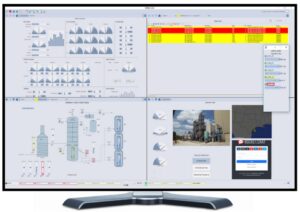 Start Up of AGA’s First DeltaV System
Start Up of AGA’s First DeltaV System
In Leirdal, north of Oslo, AGA has invested in a plant for manufacturing the fluent air gases oxygen, nitrogen and argon. The raw material is compressed air, which is cooled and then expanded, so it will pass to fluent form. The gases have different boiling points, oxygen -183ºC, nitrogen 196ºC and argon -186ºC. This is used for separating them from each other in a special separation tower. The process produces gases with very high purity. 6000 m3/hour is produced and distributed to customers throughout Norway.
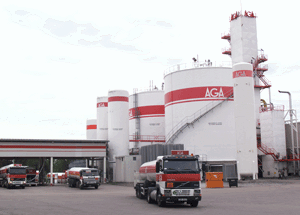 I Sverige har AGA egna gasfabriker som garanterar en ständig och säker gasförsörjning. Distributionsformerna kan variera. Tillsammans med kunderna kommer de överens om en lämplig lösning. Vissa kunder klarar sig med flaskor och mindre mobila tankar. Dessa fylls antingen vid fabrik, vid någon av AGAs egna gasexpeditioner eller via depåer hos järnhandlare och industrisäljare. Andra kunder behöver större volymer och har stora tankar i anslutning till den egna produktionen. Gasen levereras då i flytande form via tankbilar eller järnvägsvagnar. Hos kunder som har mycket stor gasförbrukning bygger vi en komplett fabrik.
I Sverige har AGA egna gasfabriker som garanterar en ständig och säker gasförsörjning. Distributionsformerna kan variera. Tillsammans med kunderna kommer de överens om en lämplig lösning. Vissa kunder klarar sig med flaskor och mindre mobila tankar. Dessa fylls antingen vid fabrik, vid någon av AGAs egna gasexpeditioner eller via depåer hos järnhandlare och industrisäljare. Andra kunder behöver större volymer och har stora tankar i anslutning till den egna produktionen. Gasen levereras då i flytande form via tankbilar eller järnvägsvagnar. Hos kunder som har mycket stor gasförbrukning bygger vi en komplett fabrik.
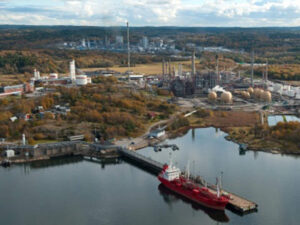
Kilpilahti Combined Heat and Power Project
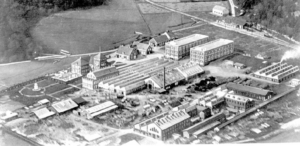
Boven; AGA-fabriken från omkring 1920
Architectuur / AGA werkt op Lidingö
De meeste gebouwen zijn gebouwd van baksteen. De architectuur is in eerste instantie verwerkt in de nationaal-romantische stijl van de jaren 1910 uiteindelijk verandert in een eenvoudiger en meer rationalistische stijl van de architectuur wordt gekenmerkt door Amerikaanse en Duitse voorbeelden van moderne techniek te blokkeren.
Het eerste deel van het fabrieksterrein werd gebouwd tijdens de jaren 1910. Op dat moment, de fabriek van portvaktshus, kantoor, werkplaats en ackumulatorverkstad. Machine workshop bestond uit een workshop zaal die werd onderstreept door de grote dakramen in een sågtandstak. Gebouwen werden gebouwd met gevels van rode baksteen en graniet plinten. Voor het ontwerp was de architect Alf Landen. AGA uitgebreid en de fabriek werd continu uitgebreid. In 1916 bouwde twee engineering gebouwen na de Amerikaanse modellen van de rationele industrieën.
Moderniteit in de prachtige architectuur werd grotendeels in een bewustzijn van de eisen die aan moderne industriële gebouwen. Voorbeelden hiervan zijn rationele plat dak, eenvoudige plattegronden, ruimten die ontworpen omgeving voor medewerkers en een ontwikkelde brand denken.
In de jaren 1950, was een ambtenaar kamer met uitzicht op het water. Voor de grote muurschildering fonds ingehuurd Sven X: et Erixon. Het is in dit gebouw dat het huidige restaurant Sjövillan gelegen.
Toen de fabriek werd aangelegd begin op een park met bomen en beplantingen. Het park is goed verzorgd en van een opmerkelijke kwaliteit te behoren tot een industrieel gebied. Tijdens de workshop blokkeert de werknemers was oorspronkelijk volkstuinen en langs de waterkant is nu een boulevard.
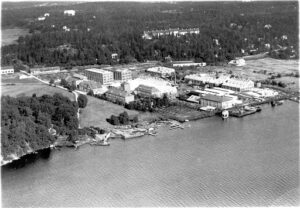
Boven; Flygbild från sjösidan av AGA Lidingö 1932



AGA-Gáz Kft.
Tartályok alapozása
1996-97
Onder Lulea
